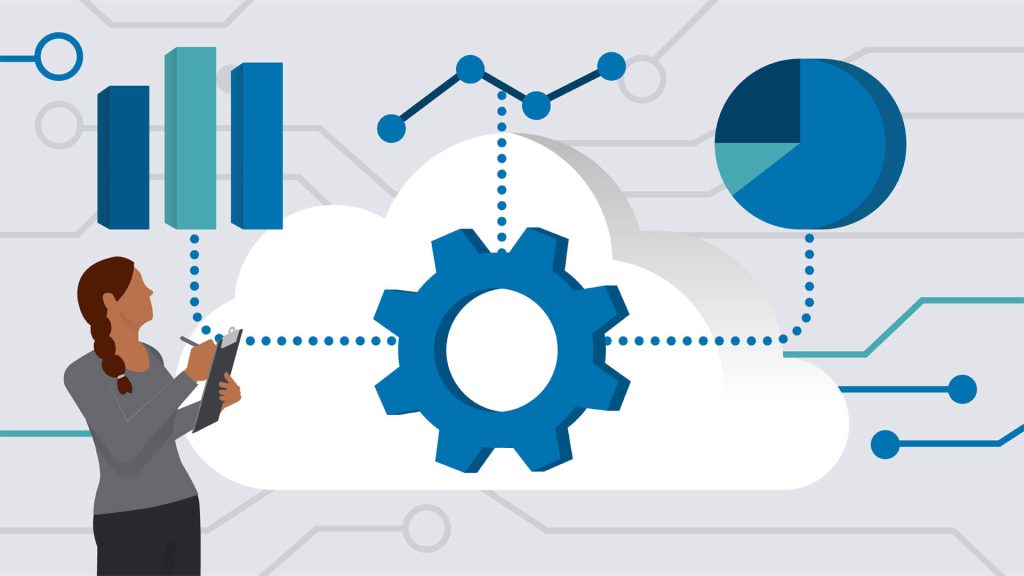With the rise of cloud computing, monitoring has become an essential component of ensuring optimal cloud performance, availability, and security.
Cloud monitoring tools are essential to helping organizations proactively identify and resolve issues that can affect their cloud systems and applications.
In this post, we will share insights into cloud monitoring best practices and solutions and assist you in selecting the appropriate tools for your business.
What is the significance of monitoring?

Monitoring is critical since it assists organizations in ensuring the availability, dependability, and performance of their cloud infrastructure and applications. Monitoring your resources and applications should be done at every level, from infrastructure and network to applications and services.
Monitoring also aids in the early detection and resolution of problems; before they escalate and cause downtime or data loss.
Best practices for Cloud monitoring
Define your monitoring needs: Before you begin monitoring your cloud infrastructure, you must first define your monitoring needs. This includes deciding which resources and applications will be monitored, as well as how often monitoring will happen and what metrics will be kept track of.
Choosing the right monitoring tool: Choosing the right cloud monitoring solution can be hard, and organizations need to think about their specific needs and requirements. Organizations should consider the following factors when selecting a cloud monitoring tool:
- Compatibility with cloud platforms: Businesses must ensure that the cloud monitoring tool they use is compatible with the cloud platforms they employ.
- Customization possibilities: Organizations should make certain that the cloud monitoring solution they select offers customization choices that match their specific requirements.
- Real-time monitoring: Organizations should ensure that the cloud monitoring tool they use delivers real-time monitoring to assist them in promptly identifying and resolving issues.
- Alerts and notifications: Organizations should make certain that the cloud monitoring tool they select includes alerts and notifications to assist them in proactively identifying and resolving performance issues.
- Security and compliance: Organizations should ensure that the cloud monitoring tool they select includes a variety of security and compliance capabilities that will assist them in ensuring the security of their cloud environments.
Cloud Monitoring Solution Must-Have Features
When looking for a cloud-monitoring solution, you should check for some key aspects. The platform you select should be simple to set up, configure, and maintain.
Integrations – When compared to your present and planned systems, it should have the majority, if not all, of the essential integrations. If the platform does not include all of the necessary built-in integrations, it should at the very least offer an ecosystem of third-party integrations. These integrations should not have a negative impact on system performance while gathering metrics and logs from your cloud-hosted workloads.
Storage, indexing, and searching of data – The amount of data collected from all of your cloud sources might soon reach terabytes or even petabytes. The cloud-monitoring platform should be able to not only store such enormous amounts of data, but also index and search it quickly. It should support search syntaxes such as SQL-like language.
Sanitation and redaction – Logs may contain sensitive data, such as financial or personal information, for some businesses. Organizations frequently want to redact or conceal such information. They may also be required to comply with industry standards prohibiting the storage of logs in SaaS systems located outside of their geographical location. If your organization meets these categories, ensure that the monitoring platform can meet these needs.
Evaluation and presentation – The platform should also be able to synthesize ingested data in order to present a unified view of your application’s health. It should be adaptable so that you may modify it to the demands of your organization.
For example, if you need cloud cost reports, the monitoring platform should be able to pull year-to-date cost data from cloud accounts and offer insights in an understandable manner. It should be able to do trend studies on brute force attacks if you are looking for cybersecurity threats.
Top 3 Cloud Monitoring Tools for AWS
3. Datadog
Datadog is a cloud-based monitoring and analytics platform that delivers real-time visibility into your infrastructure and applications. It connects with over 200 AWS services, making it an effective monitoring tool for your AWS environment.
2. New Relic
New Relic is a cloud-based performance monitoring solution that gives you deep insights into your applications and infrastructure. It connects to AWS services and provides precise performance metrics for your AWS resources.
1. SUDO Watch
SUDO Watch provides a layer of monitoring protection, allowing all operations to run smoothly. Monitor your diverse hardware and software services within on-premises, private cloud, or public cloud-like AWS with the assistance of SUDO’s experts.
Why SUDO Watch is the best Monitoring Tools for AWS
- SUDO is a leading AWS Partner.
- SUDO Watch provides cost savings
- Access to a platform that is regularly updated via browser
- Licensed security
- 24 hours a day, 7 days a week service
- Trained professionals to monitor your operations
Conclusion
Cloud monitoring solutions are critical for organizations that manage their data, apps, and infrastructure using cloud computing. These technologies provide real-time visibility into the performance, availability, and security of cloud environments, assisting organizations in swiftly identifying and resolving issues and optimizing resource utilization.

